By Randi Nygard (Oslo)
Peatland conservation is critical to Ensayos’ collaborators from Hache Saye and Parque Karukinka in Teirra del Fuego, so those of us who live and work elsewhere have been getting to know the peatlands in our own regions. Ensayistas in Norway, Australia and North America have contributed gifts of scent to Turba Tol Hol Hol Tol, the Chilean pavilion at the Venice Biennale, which puts Tierra del Fuego’s peatlands front and center.
What could a gift of scent from a local bog be? Do the odors of a bog carry meaning? And what does it smell like? To discuss these questions and to sense the scents of a bog together, my collaborator–the scent artist Simon Daniel Tegnander Wenzel–and I visited Bogerudmyra, a bog in a protected wetland area near Østensjøvannet in the city of Oslo, Norway.
After a long walk, we reached a clearing in the swamp forest by a lake and saw lots of peat moss under the grass tufts. We had found the bog. The air was heavy and cold with whiffs of nearby pine trees, and of mud and dry grass. We wanted to smell more of the bog, so we crouched down and put our fingers carefully into the wet peat moss. As the matter opened up and showed us its dark peat, we detected strong scents of wet soil, ocean, dried grass and pine. It was not rotten, as some might expect. The bog had an earthy, heavy, resinous, fertile and rich odor. It seemed dark to us, but still it was fresh and clear. There were hints of wet wool and animals, like the smell of a wet dog–or maybe a wolf?
We wondered why the smell from the bog reminded us of animals.
And why does the scent of earth seem so fresh?
What do the bog and the ocean have in common?
The fresh smell of wet soil or rock after rain is well known to most humans. It contains molecules of a substance called geosmin, which is one of the aromatic molecules that our human noses are best at detecting. Even in very minute amounts in the air we can feel the scent. And we are deeply attracted to. It is created by bacteria in the soil, and there is some evidence that it might work as an antidepressant. Springtails are also very attracted to the substance. They follow the scent to find geosmin. In this way they help spread the bacteria so they can reproduce in new places.
But the scent of wet soil also contains other molecules. Plants produce oils in the earth to prevent their roots from growing in dry periods, and as it rains, parts of these oils are lifted up into air currents and into our noses. Maybe it seems so fresh to us, because it is signal of a healthy and fertile soil with microbes and plants. It is the scent of possible growth.
Smelling is tied to breathing, and a scent can be as short-lived as a breath.
In Østensjøvannet there is a wetland center educating children about bogs and their importance. There they call the bog itself a lung, an enormous lung breathing water. The bog sucks in water in the spring when the snow and ice is melting, and in autumn as the rain is falling. The bog lets it out again during dry summer days, watering surrounding plants and trees, and during winter, releasing small streams of water under the ice so that fish can survive and not freeze into the ice. The breathing bogs also filter and clean the water, preventing floods. Peat moss can suck up enormous amounts of liquid, ten times its own weight. The filtering is an important part of larger water systems. Lakes, fjords and oceans get less dirty brown water, less pollution and runoff from farming, if the rivers are filtered through healthy wetlands.
We tend to say that the scent of ocean is salty. But salt, being a mineral, does not smell much. What we can smell from the ocean is mostly seaweed and different substances that plankton and algae produce.We think that the oceanic smell on the bog probably comes from some compounds that algae in the water produce. In this way, the scent of the bog reminds us about being alive, and related–even to the living ocean.
We find the scents of the bog, the humus, the animal and the ocean, highly attractive and familiar. To me, it also tells an old story about belonging and connections, where nature is our home and where there are strong but sometimes forgotten bonds between animals, plants and humans.
Why do we feel like we know how a wolf would smell to us, never having met one? Do the fur of dogs and wolves give off some of the same musky molecules as the wet peat? And being wild–does it have a smell?
Archaeologists think that bogs, which often create clearings in forests, were holy places a few thousand years back in time, places where people made offerings to the gods. The bogs were also seen as threshold worlds, places were one could pass down into the dark and over to the world of the gods.
The philosopher Giorgio Agamben writes about such sacred places and clearings in the forests, where people in the ancient times lit fires and prayed, in his book The Fire and the Tale. He writes that as the knowledge and mystical use of these places disappeared, and only the myths or tales prevailed. Agamben thinks that as we lost the mystical fire and sacred place, we invented tales, tales about what we can no longer reach, like mystical experiences that are gone when they are talked or written about.
In Scandinavia there is a saying; owls in the moss. The expression is strange, but well known and frequently used. It means that something is not quiet right, or that a danger is lurking. It was originally a Danish expression saying that there are wolves in the mire. Owls and wolves, moss and mire are very similar words in Danish, and wolves went extinct in Denmark hundreds of years ago. The words morphed as the surrounding world changed: the wolf and the bog disappeared. Today, wolves are wandering back to Denmark.
Our languages are thought to have evolved over so many thousands of years that the link between how a word sounds and what it represents is broken. Still, if one compares the meaning of words that begin with the same sounds, they may sometimes have something in common, a movement or a visual form, for instance. In Germanic languages words starting on str often stand for something long and thin, while words on kn are representing small and rounded objects.
kn are representing small and rounded objects.
So what comes forth if I continue the development of “the owls in the moss”- expression, by adding words with similar sounds?
wolves in the mire
owls in the moss
howls in the mass
wool in the mess
wombs in the mist
wounds in the moors
wood in the murk
wonders in the matter
Can these words, together with the scents, tell us something about the future and the past of our bogs?
In Norway, ten percent of our land consists of bogs. But, even if we by now should know how important bogs are for water, life and climate, they are still ditched and drained, made in to garden peat, turned into farmland or demolished to build roads, houses, shopping malls or cabins.
So there are owls in the moss. Also actual owls, short-eared owls are nesting in bogs, as do many other birds. It is vital to spread knowledge about the bogs’ importance and to experience the connections we have. Can that be gifted?
The bog itself is a deep culture-nature carbon archive, conserving the memories of how humans and animals interacted with the landscape thousands of years back in time. The stories of the archives can be told through pollen, charcoal, plants, trees, birds, insects, animals and artifacts buried and partly conserved in the acidic peat. But excavations would kill the bog, puncture it and drain it. It would make the peat rot and release all its carbon into the atmosphere. So, hopefully, the archives will remain in the murk. The invisible organic molecules that we can sense as odorants are often carbon based and also the building blocks of living organisms. The molecules are so lightweight that they can fly. Some of them can take part in forming clouds by helping droplets condense, and thereby create rain. Scientists in CERN have looked at how alpha-pine, a substance produced by pine trees, which most of us would know as the pleasing scent of pine, together with cosmic rays, is part of forming clouds in the atmosphere, and thereby cooling the earth. (1)
Many bogs in Norway used to be haymaking bogs, slåttemyrer, where farmers cut the grass in late summer for extra winter fodder, and where sheep grazed. These kinds of bogs, where people and animals interacted with the wetland and its plants, were the most biological diverse bogs of all. They are now in danger of extinction, since to cut grass in the traditional way, with a knife, a scythe, is not practiced any longer. Some plants only grow on these kind of bogs, where the feet of humans and animals and the knives kept the grass low, stirred the soil and water and let the sun come deeper into the vegetation and down to the peat. I imagine them giving off lots of scents, as the water and molecules from the ground evaporated.
The word for a woman’s genitals is fitte in Norwegian. It might originally have been describing wetlands. Midwifes still use their sense of smell to be able to tell if the newborn and the mother are in good health during birth.
In and near many bogs there are seemingly dead pine trees, called tyrived. These old, crooked, dry, grey trees may still have all their sap in the roots. Wood from these roots is often gifted, as it is full of scent and you can use them to light a fire on rainy days in the forest. The trees are alive, they have retreated underground, into their roots, into the bog. And one day they may shoot up again, as a new vital sapling.
__________________________________________
This project is supported by Arts Council Norway, Office of Contemporary Art and Billedkunstnernes Vederlagsfond.
Thanks to Simon for teaching me about the stories and pleasures of the aromatic world and for making a dark, rich and fertile scent to be gifted during the Biennale. Many thanks to my son Rikoll and my nephews Olav, Nils and Bjarne, for smelling the bogs with me. Thanks to my mother, Marita Kråkevik Nygård, for the grass, and my aunt, Anna Åkre Kråkevik, for the wool.
Many thanks to the generous and engaged people who shared their knowledge and stories with me, Amund Kveim from Besøkssenter våtmark Oslo Østensjøvannet, biologist Even Woldstad Hanssen from the environmental organisation Sabima, and Christin E. Jensen associate professor in paleobotany at the Dept. of Cultural Heritage, Arkeologisk museum, UiS.
1 . Ion-induced nucleation of pure biogenic particles, Nature 2016, Kirby and others.

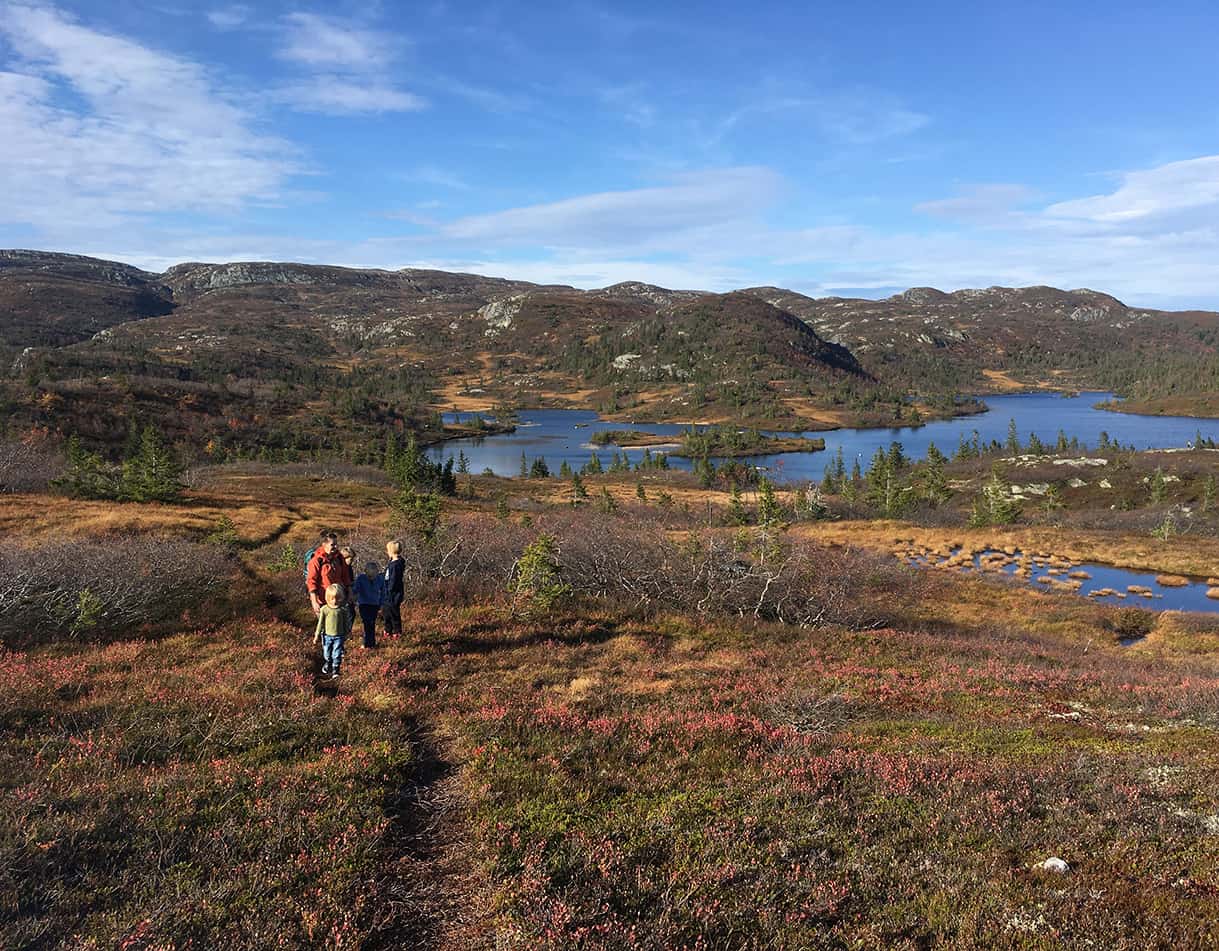
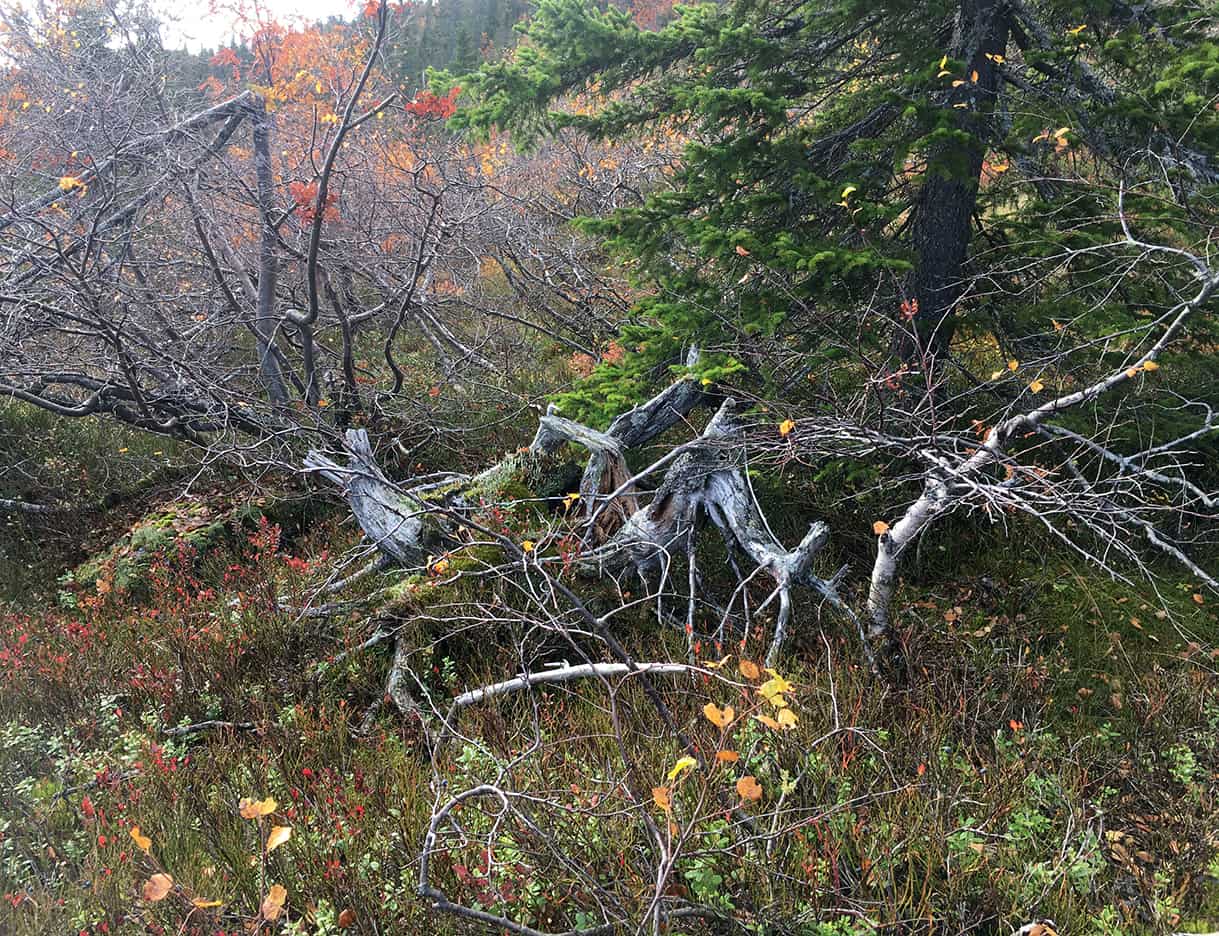

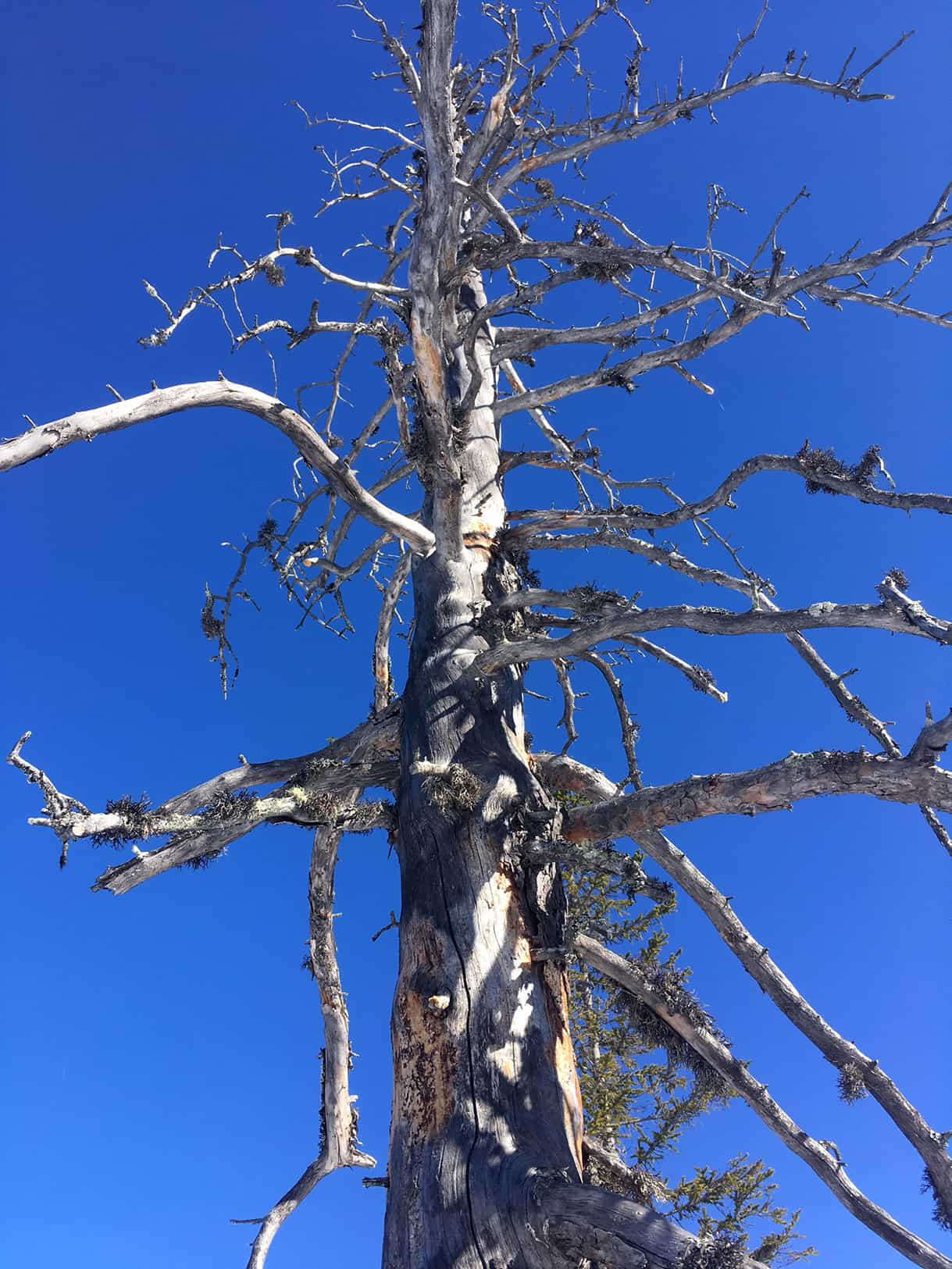
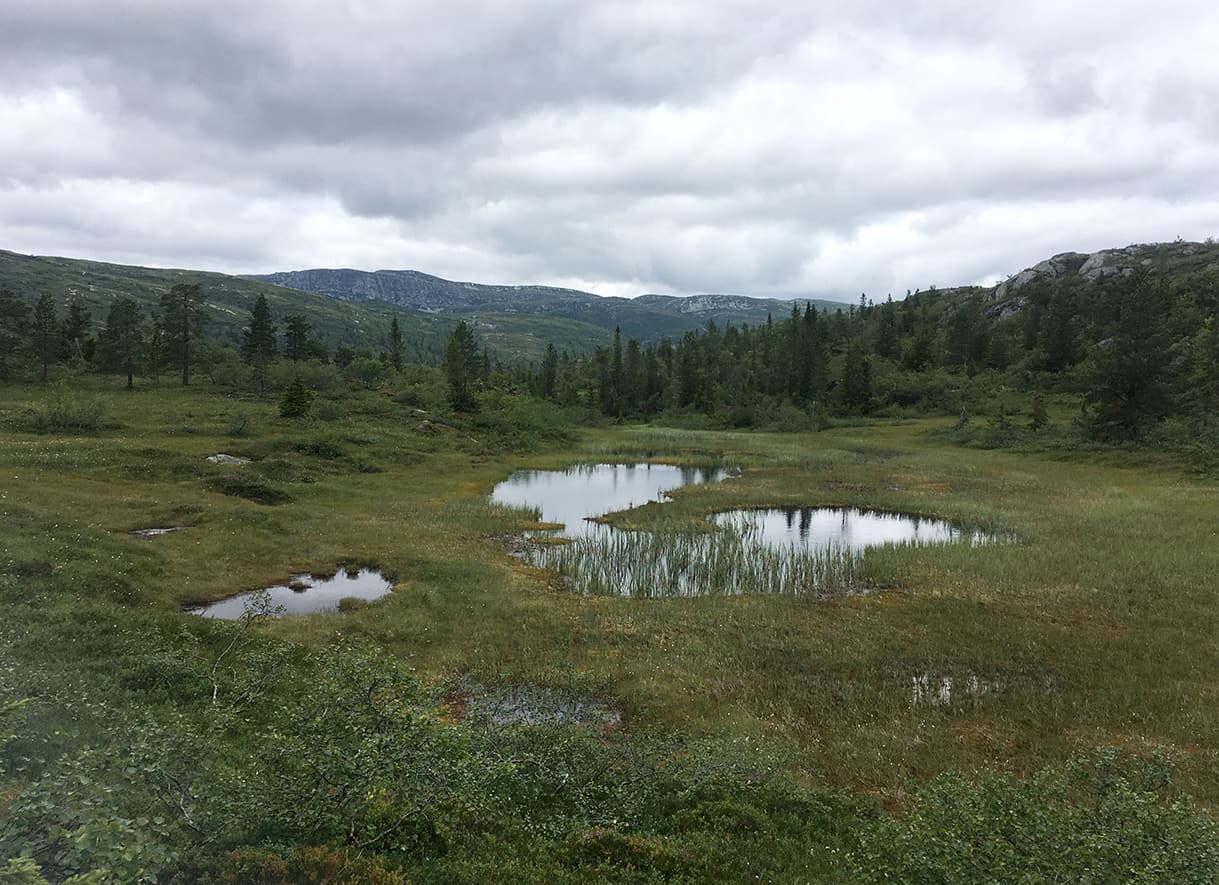
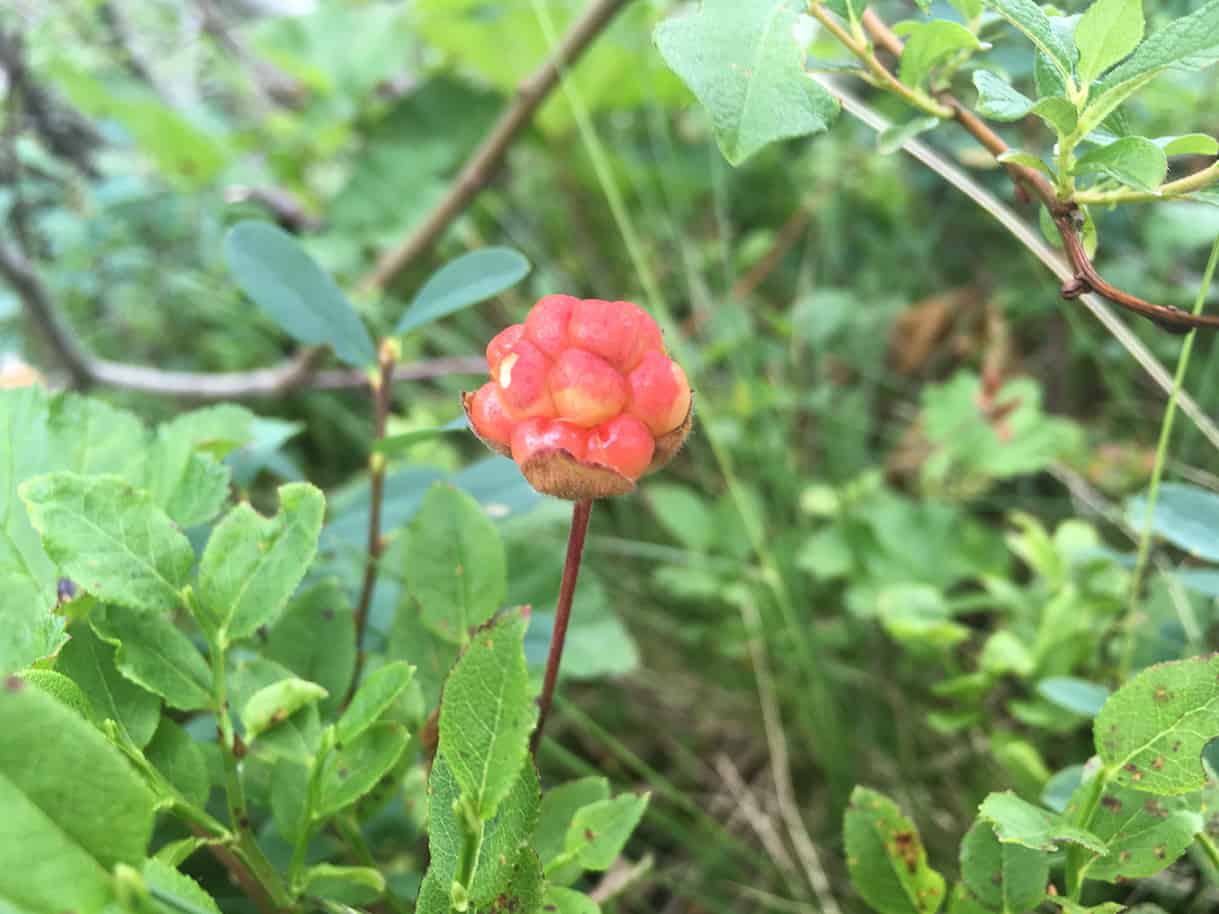
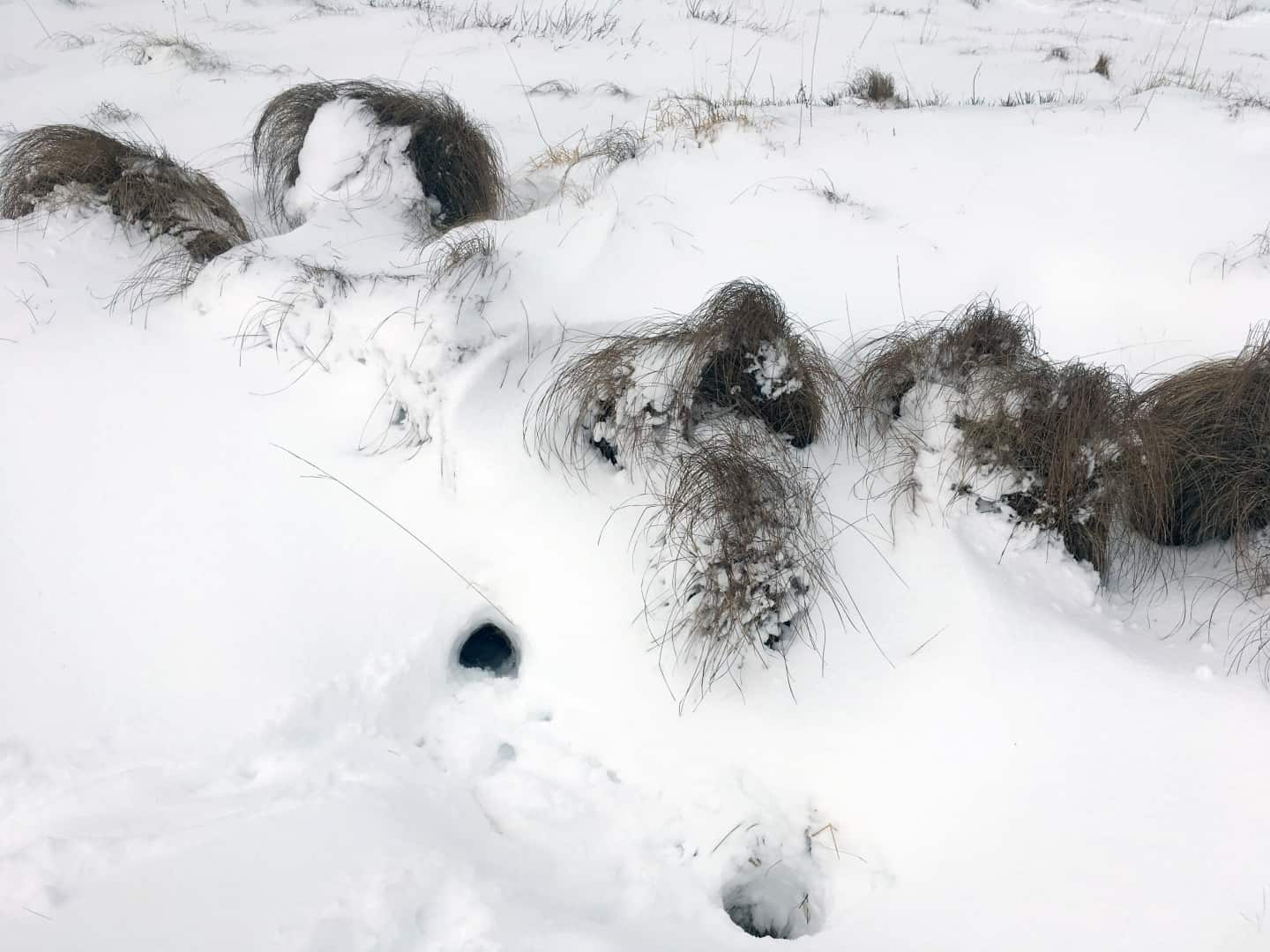

I found my childhood memories of bog-experience resuscitated -It recalled my venturing out on my own with my two dogs and an old work horse into the Northern Alberta muskeg.
Here I would jump, bounce and wiggle from one floating clump to another; managing not to fall between the islands. Here one could be absorbed into the humming vitality and magical enfoldment of the bog. The tender green of the new tamarack needles are forever embedded in my optical memory and the subtle scent of larch, and musky water stirs my sensory remembrances- every thing was so verdant, lush and mystical.